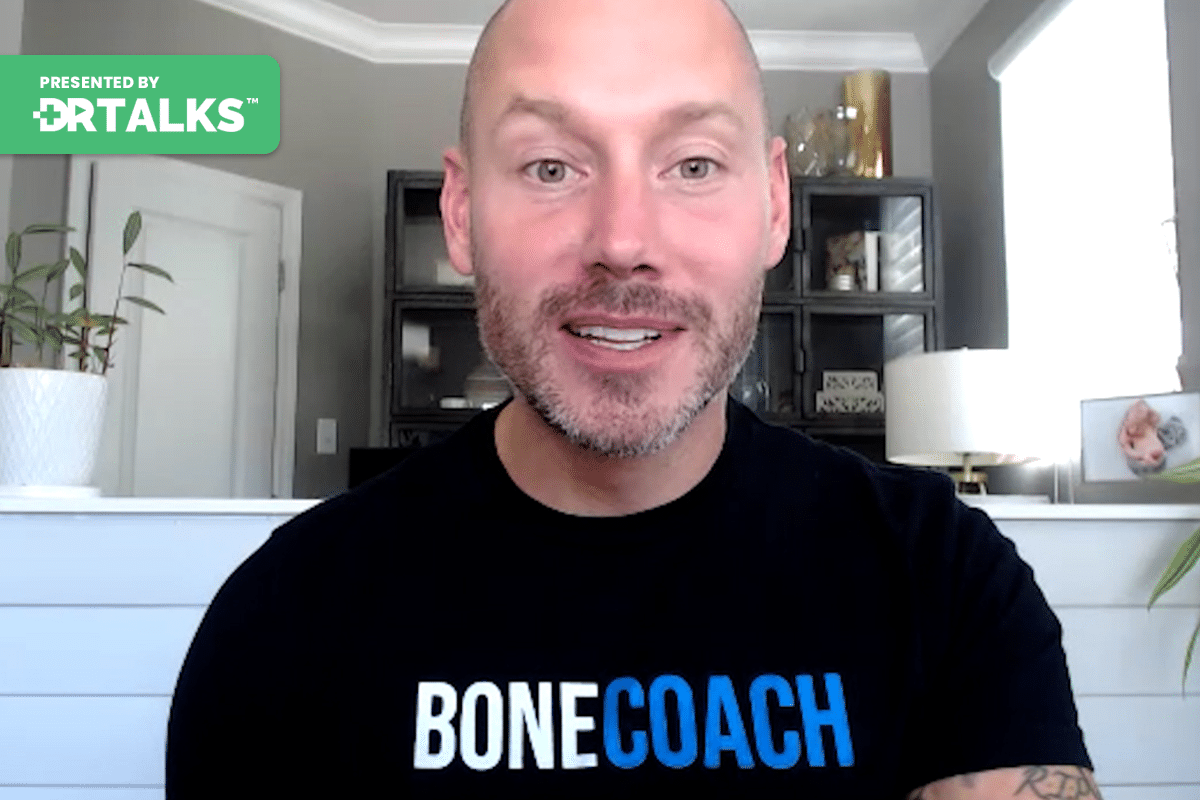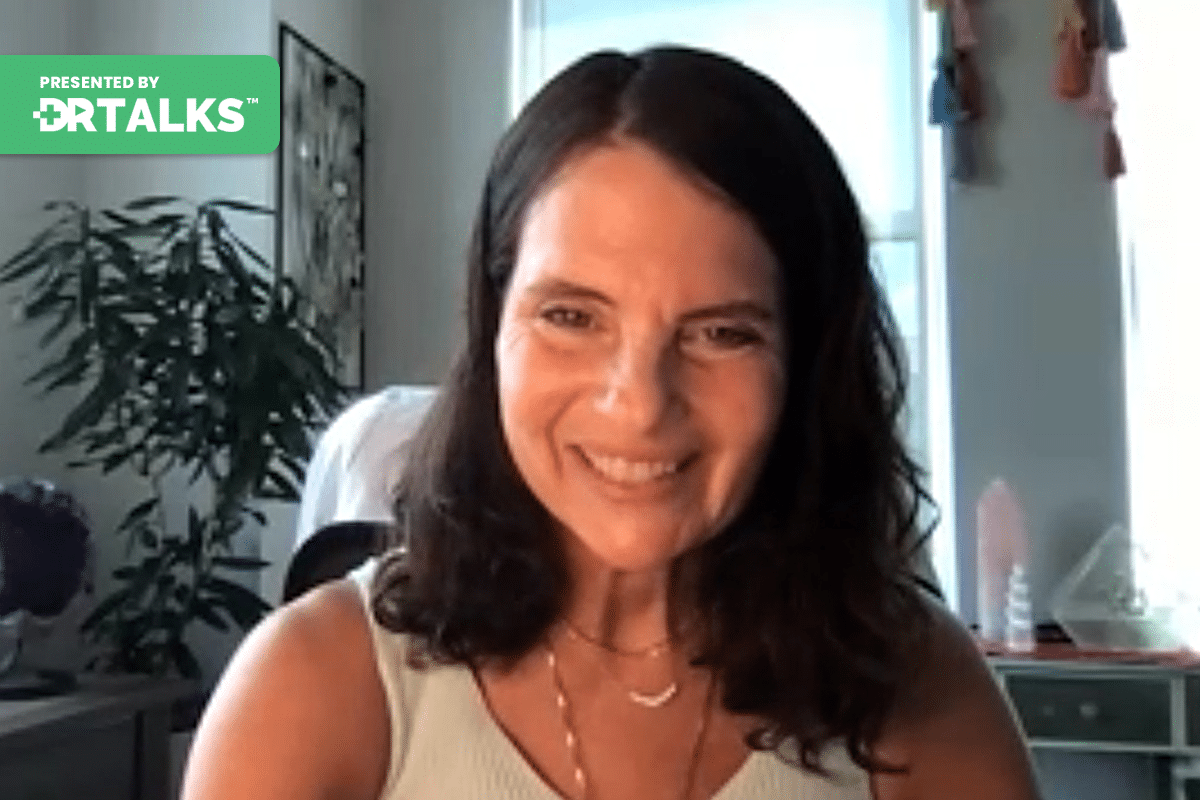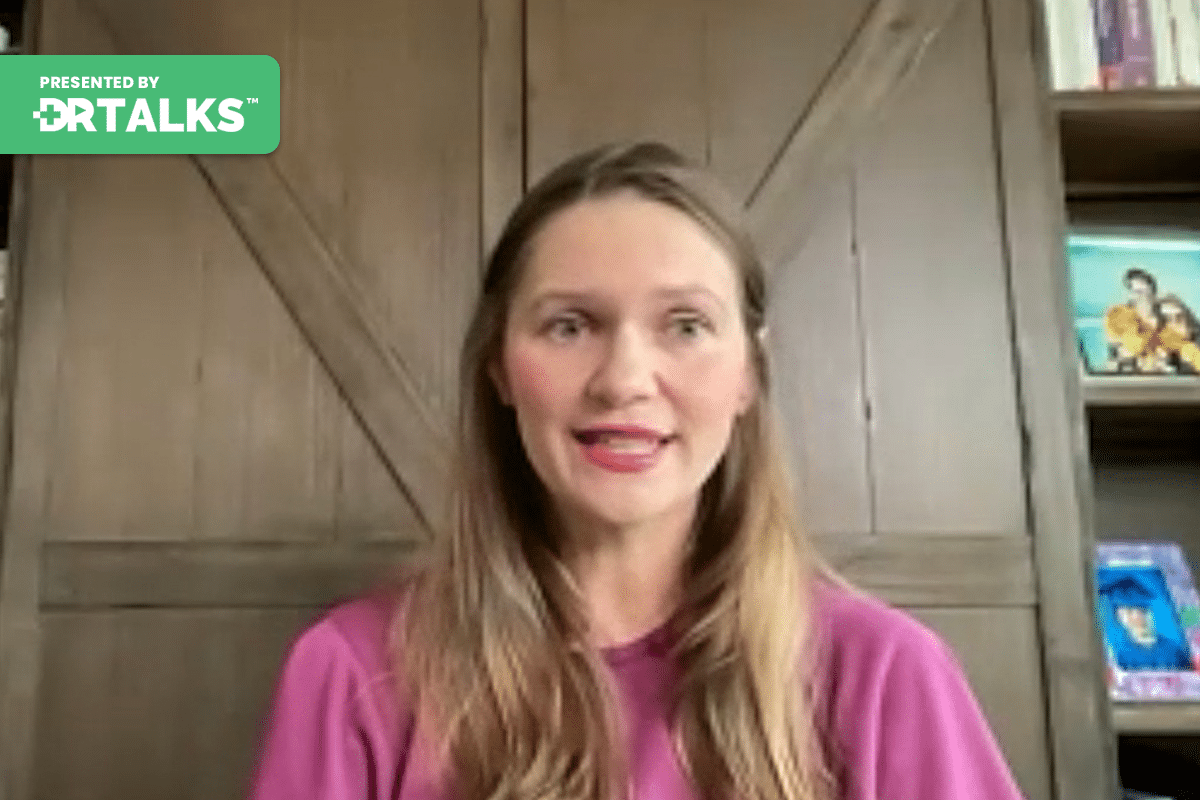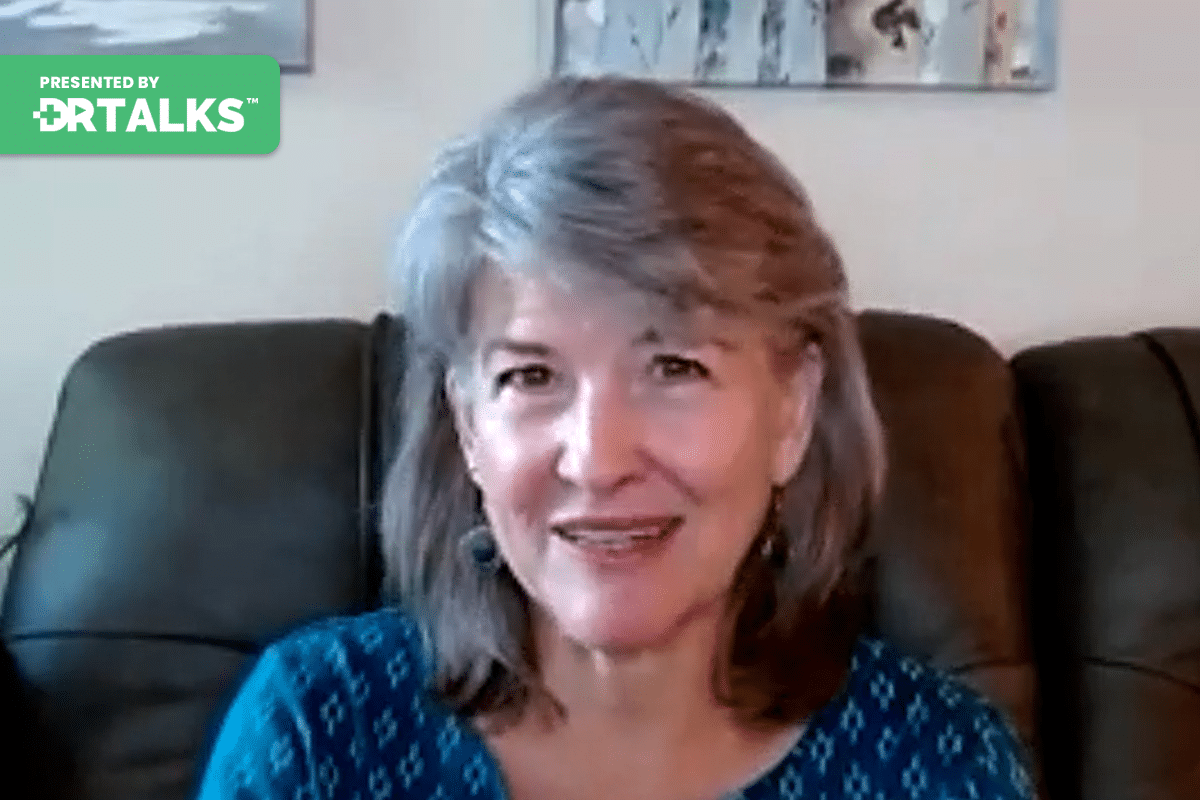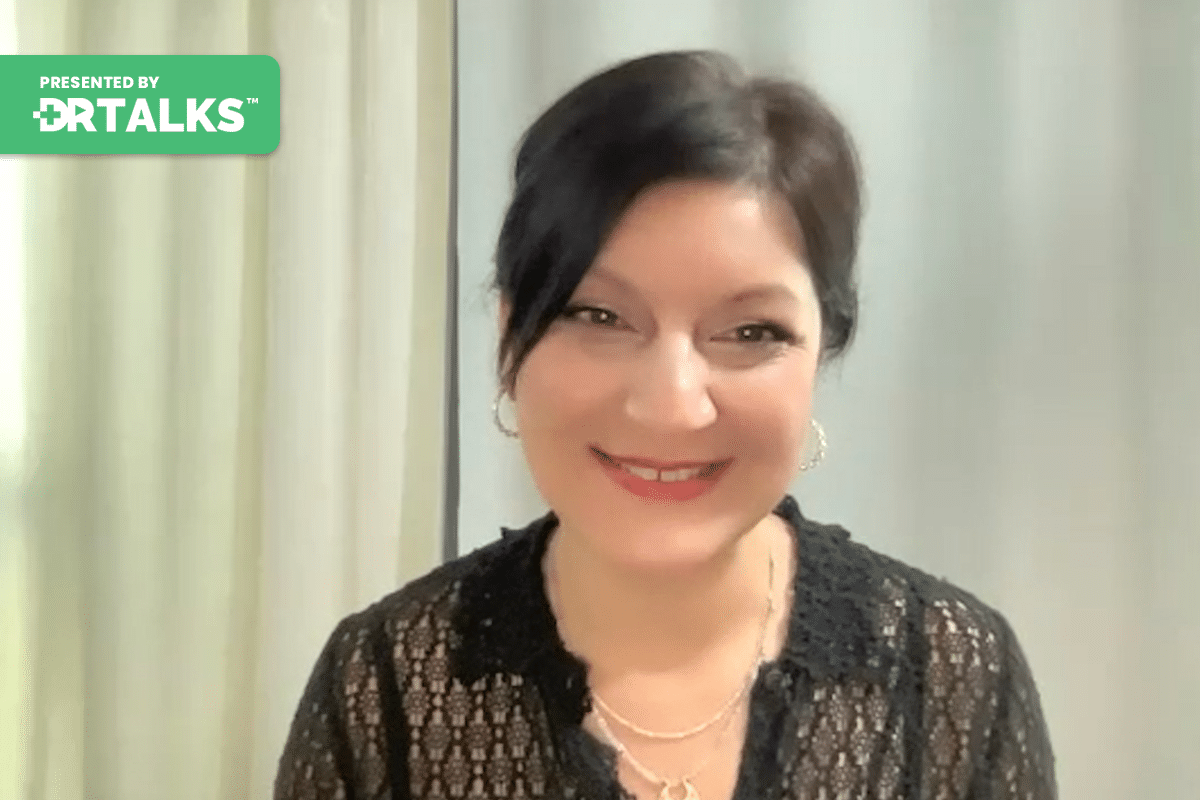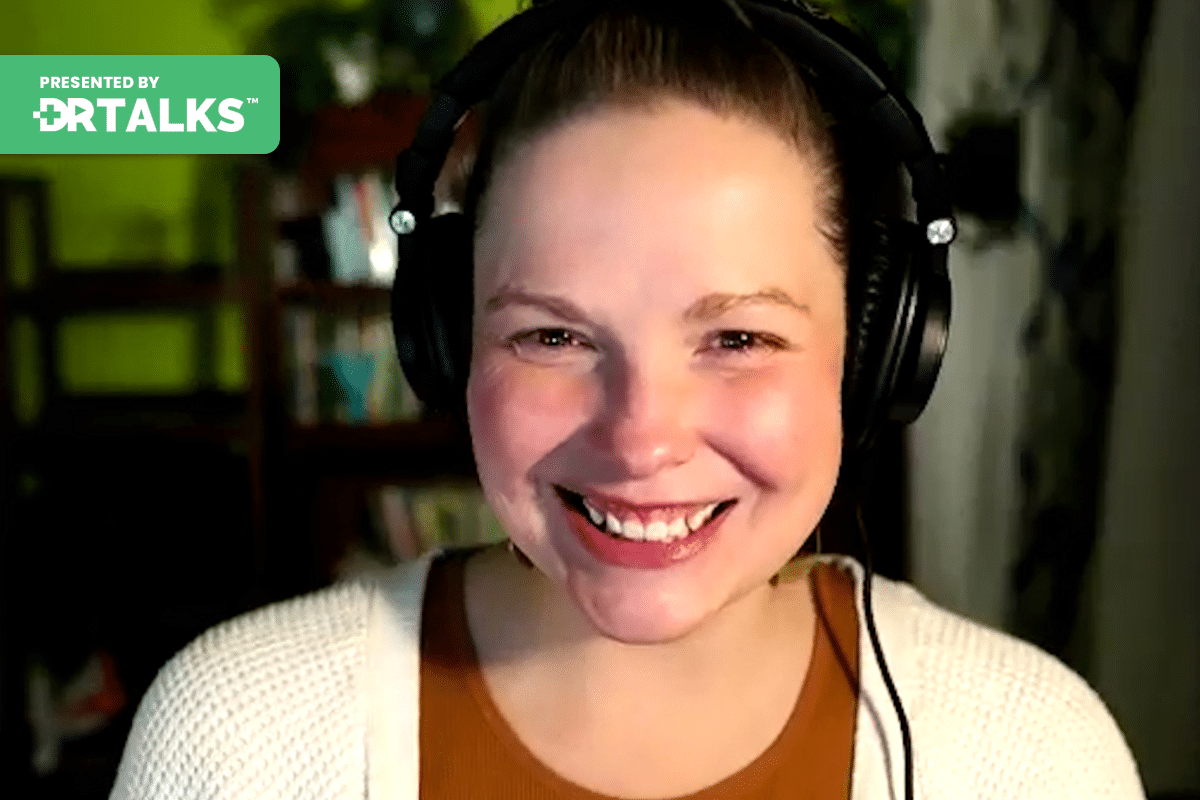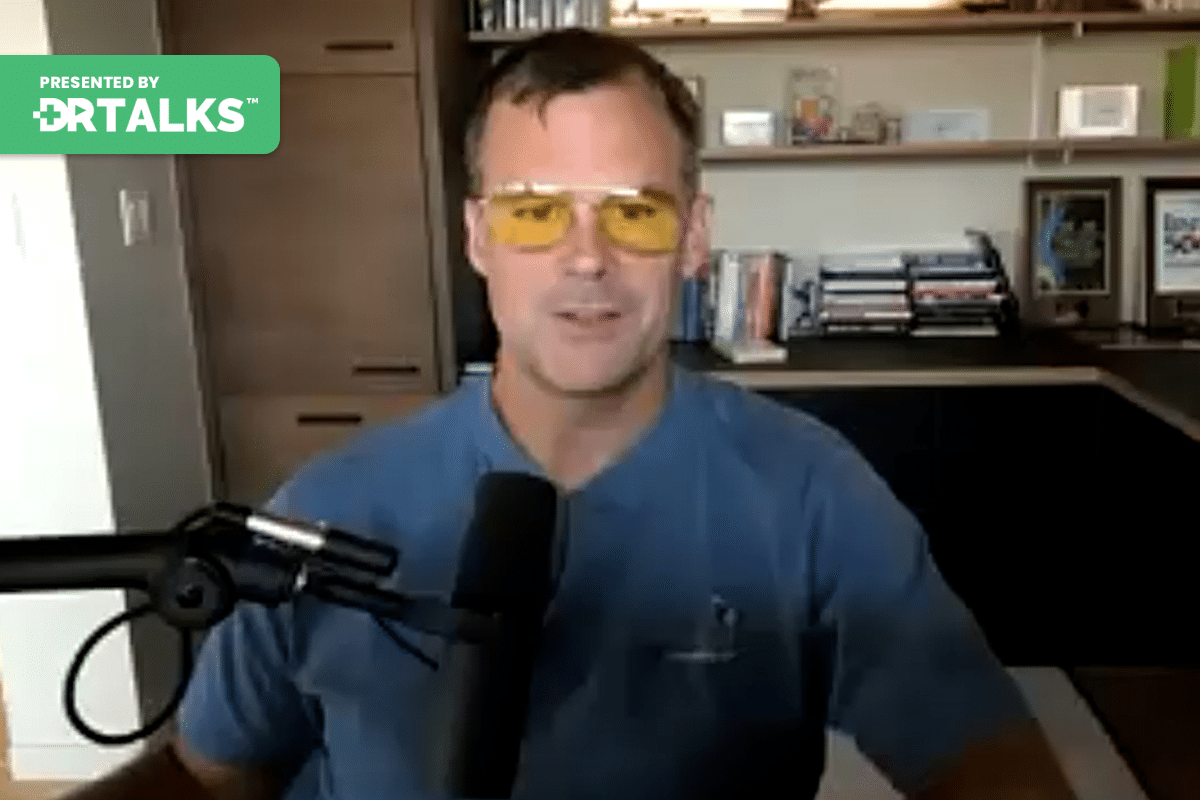Join the discussion below
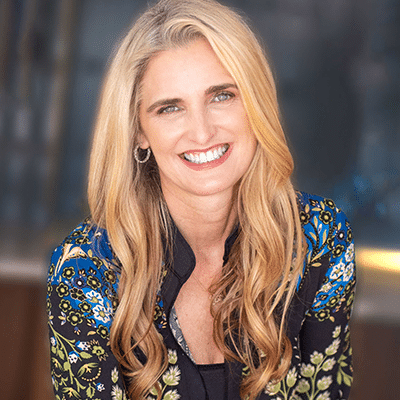
Dr. Ann Shippy is Board Certified in Internal Medicine and Certified in Functional Medicine. She operates a successful private practice in Austin, TX where she is known for her compassionate, attentive, and tireless approach to caring for her patients. She has gained a considerable reputation for successfully diagnosing and treating... Read More
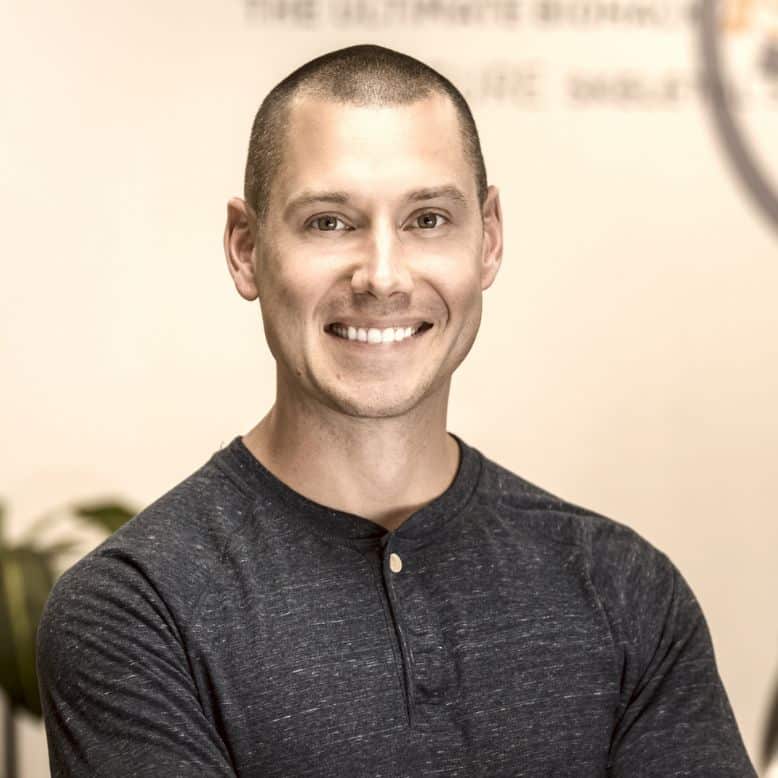
Kevin Ellis, better known as Bone Coach™, is a certified Integrative Nutrition health coach, podcaster, YouTuber, bone health advocate, and the founder of BoneCoach.com. After an osteoporosis diagnosis in his early 30s, he realized just how challenging it can be for the average person to make sense of what needs... Read More
- Discover the intricate relationship between mold exposure and its potential impact on bone health, leading to conditions like osteoporosis
- Understand the importance of specific foods and exercises that can bolster a bone-healthy plan
- Learn that low bone density doesn’t necessarily guarantee fractures, and explore what a comprehensive plan for stronger bones looks like
- This video is part of the Mold, Mycotoxin, and Chronic Illness Summit
Ann Shippy, MD
Welcome to Mold, Mycotoxins, and Chronic Illness Summit. I’m your host, Dr. Ann Shippy. And today I get to talk with Kevin Ellis. He’s known as the bone coach. He’s a Forbes-featured integrative health coach, podcaster, YouTuber, and he’s the founder of Bone Coach. And today we get to explore the mold and osteoporosis connection. Thank you so much for joining us.
Kevin Ellis
And it is so great to be here. I’m looking forward to this and it’s such an important topic too.
Ann Shippy, MD
Gosh, it is. As you know, when people find out that they have osteoporosis because they’ve broken something, it’s just not the right time. So I’m okay getting this awareness up. And you’ve done such an amazing job of reaching so many people and really changing the life, their lives by helping them have healthy bones. We love what you do.
Kevin Ellis
Well, thank you so much. And yeah, this is usually not a topic people, it’s almost like something that’s out of people’s awareness until maybe they do have a fracture or an injury, and that may be the impetus for them to do something or to make some changes. But I always, you and I were just talking about this. It’s always better to be on the side of prevention than reaction. What are the things we can do now to be proactive, to preserve and strengthen that structure that’s going to carry you to an active future? Because you can’t just make decisions, and this is for all areas of health, but you can’t just make decisions for today and tomorrow. You got to think about ten, 20, 30 years from now, too. And what that looks like. And it all starts today.
Ann Shippy, MD
I know. And there’s so much people can be doing that they don’t even know about. So let’s dive in. Let’s first tie the topic to why we have it included in a mold summit.
Kevin Ellis
Yeah, I mean mold, and mycotoxins that absolutely can tie into and play into your bone health as well. I think some of the biggest ones are with mycotoxins being toxic compounds. Right? These can actually be an underlying source of low-level toxicity in the bone marrow. So bone marrow, bones, a lot of people don’t know this, but bones are not just these hard static structures that hold you up and keep you up. Right. And help you move through life. They do that. They do a good job of it, but they’re also living tissue, their endocrine organs. And inside them, there’s this thing called bone marrow. Bone marrow is a soft, spongy material, and it produces 95% of the cells that the blood cells within your body. So we could talk about platelets, red blood cells, and white blood cells. So if you need help with healing or preventing more bleeding or clotting, that’s where platelets are going to help with that. If you need help with carrying oxygen to the body’s tissues or carrying carbon dioxide away from the tissues back to the lungs, red blood cells are going to help with that. And if you need help with fighting infections and healing wounds and anything related to the immune system, white blood cells are going to help with that. The cells that break down bone are a form of white blood cells. So anything that’s stimulating that immune system, including anything related to mold or mycotoxins, is speaking in the same language of the cells that break down your bone. So that’s a big connection there that a lot of people probably aren’t aware of.
Ann Shippy, MD
In fact, you’re hitting on something so important that we really haven’t covered yet in the summit and that is when we do see signs of bone marrow suppression like low white blood cells or platelets and even low red blood cells. Often, it’s actually being caused by mycotoxins or other toxins. But mold is the most common thing that I see when I go looking for why is there bone marrow suppression. So great information for people to know.
Kevin Ellis
Absolutely. And I guess the other part, too, or one of the other pieces could be mycotoxins affecting the intestinal cells, too, which can lower vitamin D precursors. And that’s going to help release that calcium from the bone into circulation. And that’s just going to, you know, further increase that bone loss because your bones are there. They’re a mineral reserve. They’re the largest mineral reserve within your body. So they’re a collagen protein matrix with all these minerals kind of laced into it. And when you’re losing bone or your body needs to get calcium, where’s it going to, where is it going to go to get that? It’s going to tap into the bone to release that calcium. But when it does it, it doesn’t just selectively pluck out the calcium. It actually has to tear down that whole protein matrix structure to access it as well. So you’ve got to think about that, too. And I would say those are probably the biggest connections. And the other one would be if we’re talking about there’s something called bone turnover. So it’s the amount of bone being broken down versus the amount of bone being formed when we’ve got something like mold or mycotoxins that are affecting us. What’s going to happen is that bone turnover is going to be affected, so it’s going to decrease that bone formation and increase the bone resorption or breakdown. So it’s really, really important if you’re struggling with mold mycotoxins to resolve these issues through what Ann’s sharing here, because it can affect so many other areas of your body, including your bones.
Ann Shippy, MD
And it really is important and impacts the body in so many different ways. So I love how you’ve explained that the bones aren’t just this solid thing that they’re constantly remodeling. You’re making new bone and tearing down, and a lot of times that gets out of proportion and leads to the diagnosis of osteopenia and osteoporosis. So if you want to explain what those diagnoses mean, that would be great.
Kevin Ellis
I sure can. So osteoporosis literally means porous bone, and it’s a condition that’s characterized by either not enough bone formation, excessive bone loss, or it’s a combination of the two of those things. And in osteoporosis, both your bone density and your bone quality are reduced, and that’s going to increase your risk of fracture. Now, the way most people find out they have osteoporosis is through what’s called a DEXA scan, and it’s a painless test. You wait out on a machine, it does a scan, and it tells you your bone mineral density, the actual mineral content of your bone. Then it generates a score. That score, if it’s in the plus one or minus one, you’re going to be told it’s normal and healthy. If it’s -1 to -2.5, you’re going to be told that’s osteopenia. We would call that low bone mass, which is like a precursor to osteoporosis. And osteoporosis is when you have a score of -2.5 or lower. So -2.6, -2.7, and so on and so forth. The greater the negative number becomes the more severe the osteoporosis. Now, a couple of important things to note is bone density is only part of the picture. So if you get a DEXA scan, most of the time it’s only going to tell you your bone density.
That’s the mineral content of your bone, but it’s oftentimes not going to tell you is your bone quality. That’s the structural integrity, the microarchitecture, and how that bone is organized. Those two things combine to create bone strength. So a lot of times when you get a bone density scan, you only have part of the picture. And the other thing that a bone density scan can’t tell you, especially if you only had one, is whether are you still actively losing bone right now. Present day as we speak. And if you are, what are the contributing factors to that? We don’t want to make assumptions. We want to make objective decisions. So one of the tests that you can look at to understand if you’re actively breaking down and losing bone is a serum CTX test.
CT low peptide test is the most sensitive marker for bone resorption. And it looks at the activity level of cells that are breaking down bone and that activity level is elevated or even really high. That can be an indicator of active bone loss and a root cause issue like mole mycotoxins or something else that needs to be addressed. So there are markers that you can look at, not just waiting on a lagging indicator like a bone density scan that you can look at in the near term to see what’s going on with your bones.
Ann Shippy, MD
So again, I think this is just such important information because bone density is really only are accurate if you take them at least a year apart. They’re not a very sensitive measurement really about what the changes.
Kevin Ellis
So absolutely, it’s.
Ann Shippy, MD
Really a much more important thing to do. You want to know where you are with the DEXA scan, but then knowing the trajectory is much more important.
Kevin Ellis
Absolutely. And bone remodeling is a slow process. You and I touched on this already: your bone is constantly turning over, your skeleton is constantly turning over. So it’s renewing itself throughout your life. Multiple times this happens, which is fascinating, right? You’re basically getting a new skeleton every so often. But that process can be affected. And the cells that break down bone and the cells that build bone are things that we want to support healthy action of. So that’s kind of what we’re going to talk about. I’ll give you some actionable things here very shortly that we can do to start building and moving in the right direction and even preventing osteoporosis in the first place.
Ann Shippy, MD
Not so great. So you’ve got some statistics on what the number of people affected is, how common it is.
Kevin Ellis
Yeah. I mean, it’s a lot of people have low bone density, right? So if we look at just in the U.S. alone, you’ve got 10 million Americans that have osteoporosis. You have 44 million that have low bone density, one in two women and up to one in four men are going to break a bone in their lifetime due to osteoporosis. And for women, the incidence of low bone density is greater than that of heart attack, stroke, and breast cancer combined. Right. So it’s it’s something that people should be aware of. But for the reasons I just talked about before, that you may not have the whole picture always it may not require this knee-jerk, immediate visceral reaction all the time. Right. So and then the other thing that’s. Oh, go ahead.
Ann Shippy, MD
Oh, well, I would just you know, I had gotten so that I really check for bone density in younger age of men much more often because I think it’s becoming much more common at younger ages in men as well. So it’s you know, we kind of think about osteoporosis as being more of a female problem. But it’s I really see it ramping up in men as well.
Kevin Ellis
Absolutely. Yeah. If you look at the different types of osteoporosis, because there are actually multiple types, it’s not just bone loss is one thing. There’s actually we have got primary osteoporosis that is typically related to a decrease in estrogen in postmenopausal women. My estrogen has a protective effect on bone as estrogen levels decrease as they do during menopause, that causes an increase in the activity level of cells that break down bone. But then there’s a whole nother cause of osteoporosis, and that is where you have osteoporosis or bone loss because of behaviors, disorders, diseases, conditions, medications, all of those things that could be factoring into bone loss and osteoporosis. So that is one reason why people who are in their thirties, forties, fifties, even if somebody is a postmenopausal woman, even if you’re a postmenopausal woman, we can’t just make the assumption that it’s just hormones, right? That’s not a good strategy. And we can’t just say it’s just a natural part of aging that’s not good enough. We need to actually go in and look and see, if is there really something else going on that needs to be addressed and explored. Look at some testing, and get objective markers to really understand where you’re at. So you’re not just hoping that the things you’re doing are going to move you in the right direction.
Ann Shippy, MD
You mentioned some things that I want to explore a little bit more, like the medications causing or contributing. And I think that’s a really important thing that most people don’t realize that they could actually be harming their bones with some of the medications that they’re taking.
Kevin Ellis
Yeah, some of the biggest ones, Prednisone, right. Prednisone is one that a lot of people aren’t. They didn’t know when they first started or they didn’t know the risks of starting prednisone and how precipitous that bone loss can be in a very short period of time. I think the greatest bone loss when someone is taking prednisone can happen in the first few months of using. And if you continue on using it, then that bone loss will continue to take place. So if you’re at a decision point of using that medication or maybe you’re on it, maybe have some discussions about other potential options or ways that you could potentially approach that versus you will have bone loss if you’re taking one of those medications. Some other big ones would be antihistamine drugs. Those can be drugs that contribute to bone loss and antacids, actually, and proton pump inhibitors.
Ann Shippy, MD
And if you look at the number of people that take them on a regular basis without even thinking that they might be harming their bones, it’s astronomical.
Kevin Ellis
Totally. So the ones that we that most people are familiar with, omeprazole Nexium, Prevacid, ranitidine, that’s an H2 receptor antagonist drug, but these are all drugs that are designed to either reduce the production of or increase the suppression of stomach acid. Now the reason this is a problem is because you need stomach acid to properly break down and extract nutrients from your food like amino acids, the building blocks of protein, your bones are 50% protein by volume. They need amino acids, calcium, magnesium, iron, B12. If you do not have sufficient stomach acid, you will not your body and bones are going to be starved of these nutrients. So if somebody starts on a PPI and I took these for a long period of time, multiple years, but they’re usually intended as a very short intervention. So a lot of the people yeah, a lot of the people that I see have been on them for decades, decades, five, 10, 15, 20 years or more. And that can actually really affect your bones if you’re on those long-term.
Ann Shippy, MD
And that’s where functional medicine really comes in, is getting to the root of why you have the need to take an antacid in the first place so that usually we can figure out why.
Kevin Ellis
Absolutely. Absolutely. You can figure out the answers to these things and not necessarily have to rely on that medication long-term. Another medication that can contribute to bone loss would be SSRIs, selective serotonin reuptake inhibitors. These are drugs that are typically used as anti-depressants. And there was a review of 19 studies that showed that SSRIs do have a negative effect on bone. They will increase the risk of fracture. So, I mean, there’s a whole list of medications that can contribute to that.
Ann Shippy, MD
But you did a great job of picking the most common ones, probably affecting our audience.
Kevin Ellis
Yeah. And then and then some of the other things before we get into the actionable steps, just some of the other things to be aware of. If somebody has chronic digestive issues or you have a condition, whether it’s IBD or you have celiac disease, Crohn’s, ulcerative colitis, something like that, anything that’s affecting your digestion, and preventing you from absorbing those nutrients, that could be something that is a contributor to bone loss and osteoporosis, celiac disease specifically for me, you know, I have celiac, yeah, yeah. So we understand, you know, their need for gluten-free when you’re traveling and all that but so celiac disease for those listening if I’m sure, and has maybe already touched on this but it’s you know it’s an autoimmune condition where when you ingest gluten or proteins that mimic gluten, the tiny little nutrient absorption centers inside your small intestine, I call them roots. They’re like roots in your soil. These are called villi. And what happens is they become blunted and damaged over time to where you can’t actually absorb those nutrients and your body and your bones will become starved of them, and then it will tap into your bones to access those minerals and nutrients that you’re not getting. So just be aware of that as one other contributing factor. And then the other part.
Ann Shippy, MD
I think anybody who has any bone loss going on needs that tested for in the proper way. A lot of times it’s not done in the proper way because we can all keep doing all this work and we’re not going to be able to fix the problems. We address the celiac.
Kevin Ellis
Amen.
Ann Shippy, MD
So glad you brought that up.
Kevin Ellis
And the last note I’ll make about the digestive issues and getting a good stool tester and some other testing around celiac disease can be great is if you have digestive issues, let’s bring it back to the immune system for a second. 70% of the immune system being in your gut, right? The immune system speaks in the same language as the cells that break down your bone. So if you are if you have those chronic digestive issues and they’re stimulating the immune system, it’s talking directly to the cells that break down your body. So let’s even talk about not just what you’re doing now potentially, but also maybe what you did when you were younger. If you’re listening to this and you’ve got kids and grandkids too pay attention for them also. So about 90% of your bone mass is put on by the time you turn age 18. The remaining 10% approximately is going to be filled in by the time you turn 30. So if when you were younger, you had a poor diet, and nutrition, if you weren’t getting calcium, magnesium, vitamin D, vitamin K2. If you were drinking a bunch of sugary soft drinks, or sodas or eating a bunch of candy on a daily basis and not swapping that candy for organic berries or something like that and right so if that was something when you were a kid, then that could be a contributor.
If you led a sedentary lifestyle. So if you weren’t playing sports or out being active or you had a lot of time on the couch or you weren’t doing gymnastics or these things where you had short, sharp, dynamic movements that were stimulating that bone growth, that could be something that affected you. If you had an eating disorder, if you smoked or drank excessively, if you those are some of the big ones, or if you took some of those medications, all of those things could have prevented you from achieving peak bone mass. And starting with what I call a full bucket. So it may not necessarily be the things you’re doing now. A lot of times there are some things that need to be addressed, but could also be things from when you were younger. So if you have kids and grandkids, remember those early years. That’s why it’s so important to make sure they have a good diet, nutrition, and exercise because they are building the foundation for 70, 89 years ahead of them. Right. And then if you continue on with any of those behaviors throughout your life, especially smoking, drinking, a lot of us live very high-stress lifestyles. You know, we prioritize just business deadlines and staying up late and not prioritizing sleep and all these things can catch up to you and they can have a negative impact on your health long term.
Ann Shippy, MD
So let’s move into any additional testing that you like to see. So we talked about the DEXA, we talked about the serum CTX, and any other test that you think most people should consider.
Kevin Ellis
Yeah. So let’s talk about bone turnover markers just a little bit more because I think we can talk about there’s the serum CTX that is a bone resorption marker and that looks at the activity level of cells that are breaking down bone. But if you’re going to get a bone resorption marker, let’s also get the other side of the picture right. That’s what’s going on with bone formation. There’s a test called P1NP’s Procollagen 1 Intact N-Terminal Propeptide. That test is the most sensitive marker for bone formation. So we want to look at both at the same time because that can help really tell a little bit better picture of what’s going on. Some other ones would be it’s not a bone turnover marker, but it’s a helpful test, 24-hour urine calcium, right? That can be a helpful test because what it’s going to look at is going to look at your calcium levels in your urine. And if that is really high, your bones are calcium is a primary mineral constituent of your bone. So that’s high. Could be an indicator of bone loss, too. So we want to look at that. Some other foundational tests. Most people get these when they go to their GP or whoever they’re working with specifically. They’re probably going to order these, but you’re your comprehensive metabolic panel, right? So that’s looking at your electrolytes, your kidney function, alkaline phosphatase. That’s an important one because alkaline phosphatase, you can go a little bit deeper and look to see if any elevations in your cross are coming from the gut, the bone, or some other area of your body. So there’s actually something called bone-specific alkaline phosphatase, too, that you can look at. And if that’s elevated, it can be an indicator of some other conditions there, too. Right. So vitamin D, parathyroid hormone, if you are getting your foundational test, make sure parathyroid hormone is included in that. And you always.
Ann Shippy, MD
And definitely not to miss it because again, I’m seeing such an increase in the number of people who have or are having hyperparathyroid, which definitely accelerates their bone loss.
Kevin Ellis
Yeah, absolutely. Primary hypoparathyroidism is where there are your parathyroid glands these tiny little right-size glands that are on the back side of your thyroid and they are responsible for regulating calcium levels in your body. And a lot of times what happens is people can get a benign tumor on adenoma on that. And it actually causes some dysregulation there. And the remedy for that is surgery to remove that benign tumor. And once that happens, then things can go back to normal.
Ann Shippy, MD
Start building bone again.
Kevin Ellis
You can start building bone again, Right? So that’s definitely an important one to rule out. If you are getting your done, you want to make sure you have your serum calcium done at the same time, because if your serum calcium levels are persistently elevated above ten, some people are going to go back and look at their lab work and see that their levels have been above 10 for an extended period of time. You need to get primary hypothyroidism investigated because you could have a benign tumor that is breaking calcium from your bones. So that is. And then celiac disease. We talked about that one too, Right? That’s such an important one. Also.
Ann Shippy, MD
This is great. Okay, so then what are your next steps that you think are most helpful for people?
Kevin Ellis
Well, a couple of other things that I would touch on, too, would be nutrition. Exercise is absolutely important, right? So some of my favorite foods and remember, like even when I’m talking or anybody else is talking and they’re recommending something or is suggesting to give it a try or maybe saying that, hey, this might be helpful for you. Realize that our body, our bones, everybody’s biochemically genetically unique individuals. So things that work for me or a lot of other people may not actually work for you. And if you just approach trying new things with curiosity instead of expectation, your disappointment will disappear. If those things don’t work out. Okay, So approach things with curiosity instead of expectation. But that being said, some of the ones that I really like would be, I do like sardines or salmon or mackerel or something like that for people. And if they’ve got the bones in and the bones won’t be hard, poky bones, that hurts your mouth. They almost kind of I’m not going to, I’m not going to make the case for them by saying this, but they almost kind of melt in your mouth. Right. And you know what people are like, Oh, my gosh, everybody said that. But they’ve got protein, right? Your bones, and your muscles, they need protein. They’ve got omega-3 fatty acids in them. And omega-3 is like a dampener of inflammation. So anything contributing to inflammation, especially long term’s going to contribute to a lot of different health issues. So that’s good.
And then also, if they have the bones in them, a lot of times when people are going down the path of addressing different health issues, more mycotoxins, autoimmune disease, they’ve got gut health issues, something like that, they may be pulling out like they may not have cultured or fermented dairy or something like that in their plan, which by the way, if dairy is included, that would be the way to go. But it’s not always the right fit for everybody, right? So when you remove those big sources of calcium, you’re going to make sure you’re bringing other sources in and the bones in those fish have all the right nutrients and the right ratios that nature put them in. So that can be one. Arugula, I love arugula. So cruciferous family, same cruciferous family of vegetables of broccoli and kale. It’s a source of vitamin K, vitamin C, and bio, yes, bioavailable calcium too. A lot of times, if you were to go to the store and you hold a bag of spinach next to a thing of arugula, you’ll notice the spinach says it’s got really high calcium. Well, spinach is also high in oxalate, which is an anti-nutrient that’s going to bind that calcium up. So it’s not going to be bioavailable in some people, especially if you have other health issues or you have digestive issues, you may have a hard time breaking down and degrading the oxalate in those foods.So switching to something like arugula could be helpful in those situations.
And another one, probably the last one I’ll just touch on briefly is vitamin C, Rich foods. I think we all know vitamin C is really important for our health, for our bones. But when you get vitamin C, rich foods in this could be this could be organic berries and things like that. Vitamin C stimulates pro-collagen, it enhances collagen synthesis and is actually going to help with bone-building cell formation. And on the other side, it can actually help. If you don’t have enough, it can actually move you toward the direction of bone loss and fractures longer term, longer term. So get those organic berries, get the steamed cruciferous vegetables, and things like that. Peppers are a great source of vitamin C, but if you have an autoimmune condition or lactose sensitivity, you may not be doing well with, you know, some of the other things that are vitamin C-rich. So from a nutrition perspective, there’s a lot more there, but that’s maybe.
Ann Shippy, MD
These are really good tips to get started.
Kevin Ellis
That’s maybe a starter. And then let’s just exercise, let’s touch on that one because that’s a big critical. You can do all the things that you’re learning on this summit, the great things that you and all the people she brought together or teaching you. And you can also address your gut health and eat a great diet, you know, perfect diet. There’s not one but a perfect diet. But if you don’t provide the stimulus, your body and your bones need to become stronger. You will not build that bone strength. So what do you need to do? There are two different types of stimuli that your bones need. You need muscle pulling on bone and you need impact. The most effective interventions are going to use one or both of those things in combination. So a lot of times people will be told to just do weight-bearing exercise and they’re not really sure what weight-bearing exercise is. So weight-bearing exercises, anything where your body and your bones are working against gravity to keep you upright there, things you’re doing on your feet and that is placing a good, healthy stress on the bones. So you’re walking, you’re jogging, you’re hiking, you’re dancing, you’re gardening, you’re playing with the kids or the grandkids out in the yard. Or it could be yoga, taichi, pilates, qigong, all of those kinds of things are weight bearing also. So we want to incorporate those things into our plan. And notice not all of those were formal exercises, right? So walking is great.
Ann Shippy, MD
Make sure you’re really finding something you enjoy.
Kevin Ellis
Absolutely.
Ann Shippy, MD
I think that makes the biggest impact. Actually looking forward to it and enjoying it.
Kevin Ellis
Absolutely. It’s so important. And then if we’re talking about things that people enjoy, let’s talk about non-weight-bearing exercise too, because this is an important part of the picture. Non-weight-bearing exercise is where you’re not placing that good healthy stress on the bones. And this is something that astronauts deal with when they go up into space, right? They’re not working against gravity. And if they don’t actively combat that, they can have significant bone loss in a short period of time. It’s used it or lose it for your muscles in your bones, use it or lose it. So if you’re only form of exercise is cycling or it’s only swimming, swimming’s a big one. You’re not putting that good, healthy stress on your bones. And if you only do that as your form of exercise, that’s not enough, right? So if you enjoy swimming, great. Continue to do it. If it makes you happy and reduces your stress, you spend time with your family doing that. Continue doing it right. That can be great. But don’t count it as your only form of exercise.
You need to bring in this last piece, which is resistance training and muscle-strengthening exercise. And this is where you bring in maybe resistance bands or barbells or dumbbells, or if you’re not comfortable with that, maybe it’s a machine right at the gym or something like that, then you can do exercises. I don’t want to intimidate anybody. Right. But some of the ones that are most helpful for bones are squats, right? Deadlifts, overhead presses, if you don’t have it, as long as you don’t have fracture vertebral fracture, and then some chin ups too, and maybe some jumping or, you know, box jumps or landings or something like that, when you’re doing that safely. So all those things can be helpful. But what’s most important is you don’t have to start knowing how to do all that stuff and have the perfect plan on day one. Meet with somebody or consult with somebody who knows kind of how to put that stuff together for your body type and then go from there, slowly start to build up from there. So I would say those are some of the most important points that we got to point out there.
Ann Shippy, MD
That’s great. Let’s talk about osteoporosis medications and why that may not be the panacea that it’s painted to be.
Kevin Ellis
Yeah, because if you go to any traditional most traditional doctors, they would say if you go to them and you are told you have osteoporosis or even osteopenia, they’re going to say, take some calcium, take some vitamin D, go for a walk, here’s your bone drug. We’ll see you in two years for your next bone density scan. And then you’re off on your own for two years. That is woefully inadequate. Number one, there’s a lot more to be done than that. Right? I just talked about some of the big pieces. But you have to figure out what’s causing the bone loss in the first place, not just take something to cover it up. You have to identify that. Then you have to address it. Then you have to focus on the diet, digestion, absorption, and then you have to focus on the stress, the sleep, the exercise, the hormones, all those other pieces. So you can see a single pill will not address all those things. And in some cases, it can actually make those things worse. So let’s just talk about it because these are medications that a lot of people have heard the names of, but they may not fully understand them. So let me just put them all on the table for you. So there are two different categories of these medications primarily, let’s just stick to the two big ones. There are antiresorptive and anabolic anti preservatives are designed to slow down the activity level of cells that break down bone. So these are the Bisphosphonates: Fosamax, Actonel, Reclast, and Boniva.
People have probably heard those names before. And then you have, frankly, ligand inhibitors like Prolia. Okay. So if you have bisphosphonates, the safety and efficacy of these drugs are not really well known beyond five years. And as you and I are going about our daily lives, doing our daily activities, you’re getting these tiny little micro-cracks, micro fractures in your bones. That’s normal for every single person. You’re doing chores around the house, you’re doing it, you do a good workout, and you get this tiny little microfracture in your bones. Then what happens? You have cells within the bone called astrocytes. They sense that damage and they send out a signal that says, Hey, we need to become stronger. And these osteoclasts, the cells that break down bone receive that signal and they come and they scoop out that damaged bone. And it’s a couple of processes right behind it. Come to the cells that build stronger, healthier bone. The osteoclasts, if they fill that in, if you’re taking some of these medications, you can actually slow down that process too much to where you start to accumulate that old, worn, damaged, weakened bone over time. And this is why even if you’re taking a bisphosphonate and your bone density shows stable or even a little bit higher, the bone may not actually be stronger. You could just be developing these more brittle bones over time, right? So that’s a big one.
And then the rank ligand inhibitor like Prolia, we’re still talking about anti-resorption. These are, they can they will slow down the activity level of cells, the breakdown bones. They can give you a little bump in bone quality. But once you start this medication, you cannot come off without an increase in your risk of vertebral fractures. Right. So you basically get on this medication and the only way to come off of it is to transition to another to bisphosphonate. And if somebody has been on a prolia for three rounds 18 months or longer, you can’t just use any old bisphosphonate. You have to use request. A lot of people do not understand this and they just stop all their medications and they increase the risk of deeper fractures and it’s not good.
Ann Shippy, MD
Yeah, that’s really and this gets back to informed consent, like when these are serious medicines and people really need to understand what they’re signing up for. But the pros and cons are and then make a really informed decision.
Kevin Ellis
Yeah. And, and I’ll just say to like I’m not anti-medication right. And you should always.
Ann Shippy, MD
Always to score it.
Kevin Ellis
Exactly like I see we’ve got, you know, a lot of people in our community, thousands of people in our community. I see this every single day and I’ve seen situations where it’s necessary and lifesaving for some people. Right? So there are those situations. But the majority of the time, there is so much more that can be done before you even get to that point of using one of these medications. So obviously consult with your physician as you’re going through making these decisions. But keep in.
Ann Shippy, MD
Mind that understands that you can actually strengthen bone without doing medications, like you can get a baseline bone density, look and see where these markers are and get a sense of whether the person like whether it is an old problem and it’s better now or use the markers to know if the actions that you’re taking are working and then and then follow with the serial bone densities and you can see improvements in the bone density.
Kevin Ellis
Absolutely. Recent events. Absolutely. And we see this all the time. People that are able to do it without medication improve their bone density in their bone strength. Now, those are lagging indicators. So we have seen people 12 months, 18 months, and two years down the road that have gone on to improve their bone density and bone strength. In the near term, what we look at are the bone turnover markers.
Ann Shippy, MD
Yes. Are we moving less? Doctors don’t order. You have to ask for them.
Kevin Ellis
Exactly. Exactly. So you need to be able to monitor those things in the near term and see improvements in those. And you can see improvements. We see these all the time. You can see improvements in a 3 to 6-month period. You know, just by making some of these changes that we’re talking about in that you’re learning about on the summit, too.
Ann Shippy, MD
Yeah, I think and I think it’s so great the way that you’re getting this word here. It’s something that really everybody needs to know.
Kevin Ellis
Yeah. This is so, so, so important.
Ann Shippy, MD
Any other tips that you want to leave our audience with?
Kevin Ellis
I would just say, you know, when you’re when you get something like a diagnosis of osteopenia or osteoporosis or even if you know somebody who has that diagnosis, they can breathe first before making a decision and jumping right into the first thing that’s proposed to them. You can always take more than 15 minutes to say, I’d like to get a little more information first. Can you help me make the most educated, informed decision? Right. Nobody should be pressuring you immediately right now to do this. You have the right as the patient and your own best advocate to say. I’d like to have a little bit more information before I make that decision. So figure out what’s causing that bone loss. Understand what tests to look at and how to monitor those things. We talked about a lot of them today. Get that diet nutrition dialed in, resolve those digestive issues, the sleep, the stress, the exercise, the hormones, all those things play into this. So, you know, you can move in the right direction. There’s so much you can do.
Ann Shippy, MD
I thought for you to let people know how to find you in and your workout in the world because it really is. You know, we’ve just touched the surface here today with how you’re helping people.
Kevin Ellis
Yeah, absolutely. I mean so people can always find me at bonecoach.com. So bonecoach.com we’ve got a lot of free resources for helping people build stronger and healthier bones and we’ll walk you through that step by step. We’ve got recipes, we’ve got different interviews, and a lot of resources and tools and things that you can use at bonecoach.com. And then you can also find me on Instagram at BoneCoachKevin and you can find me on YouTube at Bone Coach as well. And Facebook, too. So those are the big ones. But bonecoach.com is probably the best.
Ann Shippy, MD
So well, thank you for everything you’re doing. I know that this is a personal passion for you, but here you really don’t want to see people suffering with these conditions. And it’s just so unnecessary.
Kevin Ellis
Totally agree. And thank you so much for having me on for helping spread the word.
Ann Shippy, MD
Thank you so much.
Downloads

